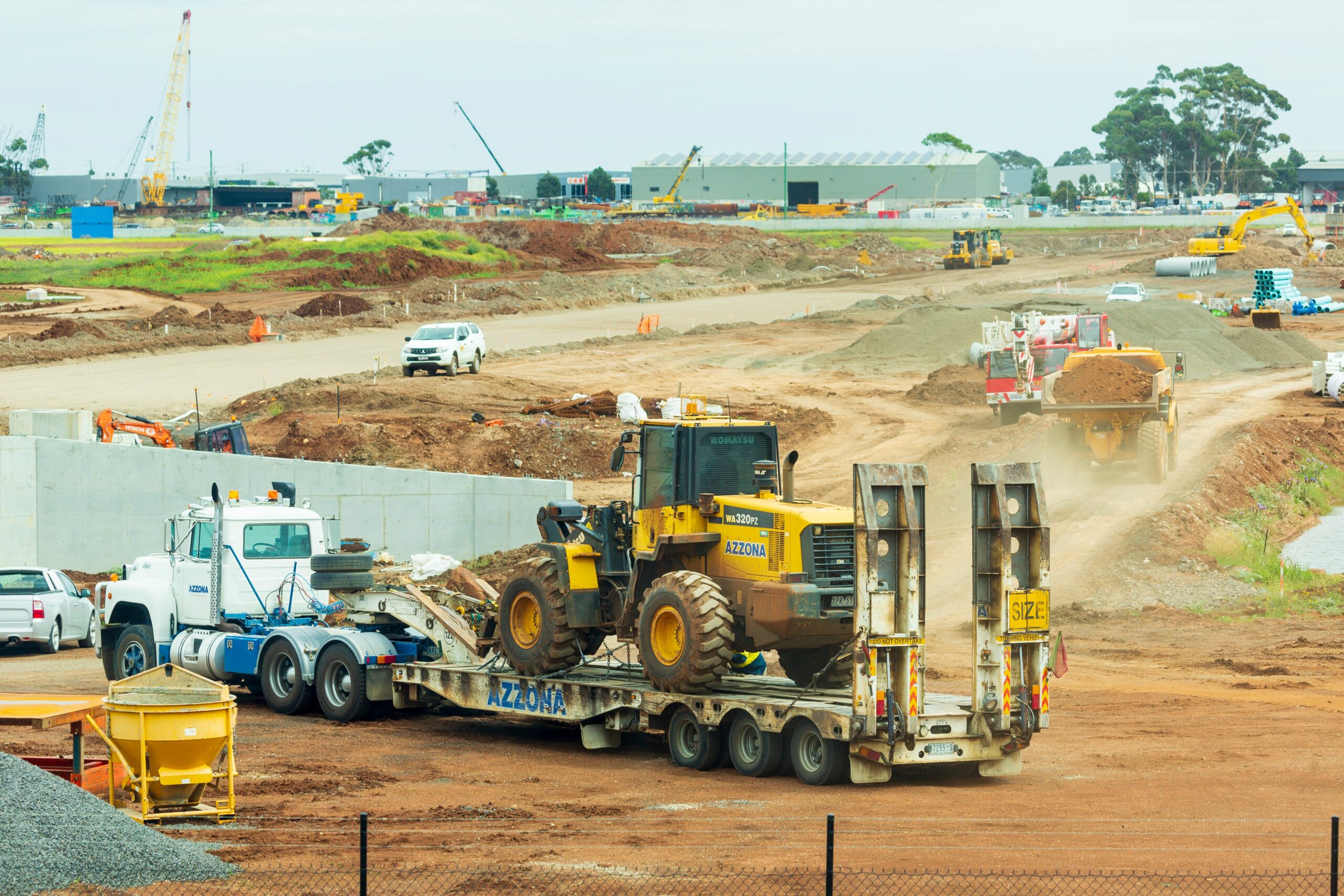According to Nick Fryer, Vice President of Marketing, Sheer Logistics, the heavy construction equipment manufacturing industry is growing, as agricultural and mining activities have expanded significantly over the last decade, both in demand and geography. Despite this growth trend, the continued success of heavy construction equipment manufacturers relies on their ability to how well manufacturers can get their equipment to the often remote job sites where they are needed most. As the industry has grown, so have the distances that have to be traveled in order to bring equipment to active sites.

In this article, we’ll look at four key strategies that can be used to approach remote hauls. Moving equipment to remote sites is tough. But when done right, it gives manufacturers an edge and helps build stronger supply chains.
1. Planning Remote Hauls
Recent reports from the DRC are a reminder of the development gap that frequently occurs with mining sites. High-yield mining areas often lack good infrastructure. In fact, they’re usually some of the hardest places to reach.
That’s why planning and researching is so important for heavy equipment transportation. Here are the main steps for organizing safe and effective remote hauls:
- Assess the Site: Use GPS and satellite maps to assess not just the delivery site itself but its proximity to roads, train lines, settlements, and refuel stops.
- Define Loads: The dimensions of the equipment being transported will highlight important transport restrictions, but it’s just as important to consider climate and vibration sensitivity. Certain loads will need enclosed trailers to maintain quality or even specialist packing approaches to withstand the vibrations of ill-kept, rural roads.
- Use Data to Inform Lead Times: Regional data on weather patterns, refueling areas, etc., can be used to inform scheduling and lead times. The best information, however, will come from past logistics operations. That’s why it’s so important to invest in tracking mechanisms (as we’ll explore later). No matter what, lead times should have plenty of buffer included. Particularly when dealing with new sites and routes.
- Create Contingencies: High-risk zones will require a plan B and C. Make sure to prepare for alternative routes and what to do in the event of a sudden route issue or emergency.
- Invest in Tracking Technology: Tracking technology is well-proven to boost the efficiency and safety of logistics operations. Investing in it during the planning stages provides a useful foundation for many other strategies. It’s these devices that will help inform any routing changes during the journey and will later provide the insights needed to plan other remote hauls.
2. Mastering Permits, Route Analysis and Compliance Barriers
A vital part of optimizing your logistics operations is getting ahead of potential barriers long before they arrive. When it comes to mapping an effective route for a remote haul, here are the three main issues that arise and how to handle them:
- Route Planning: Every aspect of the Plan A route and its backups needs to be analyzed. The condition of the routes, what they’re able to withstand in terms of height and weight limits, and risk factors such as steep inclines and weather issues all need to be considered.
Satellite and GIS data are vital for this but as is any on-the-ground information that businesses can get. Some government sites will offer guidance on overweight and oversize-friendly corridors, but in more remote parts of the world, the most accurate information will come from people who have used the routes themselves.
- Permits: These differ widely between states and countries and will shift not only depending on what’s being transported, but when. Make sure to check what the permit time windows are and if there are restrictions that need to be taken into account.
- Compliance: There are many regulatory bodies to contend with when transporting heavy equipment. A unique issue that rural haulers face is environmental restrictions on which lands they can cross and how. Having good tracking systems in place can help hugely with compliance as it will automatically document routing, etc., so that logistics teams can prove compliance when checks arise.
3. Choosing the Ideal Trailers and Site‑Handling Equipment
Choosing the right trailers and site-handling equipment can determine how quickly and how well equipment makes it to a remote site. AI-driven software is now able to assist with these decisions and ensure that all aspects are considered. Generally, however, it’s important to:
- Match the trailer to both the terrain and the load being carried. For example, a dual-lane trailer is best for ultra-heavy loads that need to make it through narrow roads.
- The site-handling equipment should suit both the site and the equipment. If the ground at the delivery site is soft or unstable, a crane pad might be necessary. Delicate placements might also require hydraulic gantries.
- Consider adding onboard cameras to assist with loading and unloading in areas where visibility might be an issue.
4. Overcoming Weather, Terrain and Seasonal Access Issues
Here are some best practices to navigate difficult remote haul conditions that might appear:
- Use GPS tracking and Transportation Management Systems (TMS) to flag routing and weather issues early on so that there’s still room to adjust if needed.
- Invest in extensive driver training and monitoring. Some monitoring systems will send alerts if drivers are taking corners too quickly or using incorrect routes.
- Consider using forecasting tools that can show seasonal risk factors and plan around them.
- For very remote and challenging routes, send a pilot crew ahead of the main logistics team.
Turning Challenges into Operational Wins
Successfully transporting heavy equipment to remote sites requires a combination of careful planning, compliance with regulations, and the right equipment. By implementing robust strategies like thorough route analysis, using advanced tracking technology, and choosing suitable trailers, manufacturers can overcome challenges posed by weather, terrain, and seasonal access. With these strategies in place, companies can ensure their equipment reaches even the most remote and difficult-to-reach projects safely and efficiently, giving them a competitive edge in the expanding construction and mining sectors.


 Copyright 2017-2025 All rights reserved.
Copyright 2017-2025 All rights reserved.